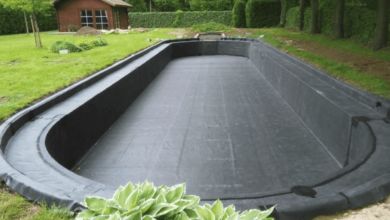The Complete Handbook For Selecting The Correct Paint Calculator

Whether a painting project is for an external house restoration or a room makeover, a smooth, reasonably priced procedure depends on having the right amount of paint. A paint calculator is one of the best instruments you have at hand for this work since it can precisely project the amount of paint you will need for the job. An exterior paint calculator is crucial for homeowners working on outside projects to make sure they avoid running out of paint midway through the task or wasting money. We will lead you through how to find the correct paint calculator in this article, stressing important characteristics and factors that will enable you to decide which one best fits your requirements.
Appreciating a Paint Calculator’s Value
The success of any painting project depends on your selecting the appropriate paint calculator. A paint calculator’s objective is to give, depending on size and surface type you are working with, an accurate estimate of the paint required. Without this tool, you might find yourself buying too little paint, which would cause delays and aggravation; or buying too much, which would cause unneeded expenses. An external paint calculator is especially crucial for tasks involving outside painting since the surface areas and involved materials vary. Using the right calculator guarantees that your painting work runs without problems from beginning to end and helps you maximize your resources.
See also: How to Expand to Brazil with Brazilian Portuguese Translation
Features to Search for in a Paint Calculator
The ideal paint calculator should be one that provides the correct collection of tools for your particular demand. Easy of use is the first quality to give thought. The calculator should have a straightforward interface allowing you to rapidly enter dimensions and surface area parameters regarding the painting you are doing. Furthermore, the finest paint calculators let you enter particular elements that might affect paint coverage: the kind of paint, the number of coats, and surface roughness. Access to a variety of choices guarantees that the estimate given is as accurate as it might be.
Think about the Calculator’s accuracy
Selecting a paint calculator depends mainly on accuracy. A competent calculator will produce consistent findings that fairly reflect the actual quantity of paint you will require. While some calculators include particular features like wall texture and paint finishes, others rely on broad estimations based on typical coverage rates. Search for a paint calculator that lets you vary with these factors. The kind of surface used for outside projects—stucco, wood, metal, or another—may have a major impact on the paint requirements. You will be more likely to avoid running out of paint or squandering money the more exact the calculator is.
Variables in Input: Essential Knowledge
To produce an accurate estimate, different calculators will need different kinds of information. Most paint calculators require you to supply the area’s measurements you intend to paint. Usually for interior work, this entails measuring the walls and then subtracting the window and door areas. Larger surfaces—including the exterior walls, trim, and other architectural details—should all be considered in exterior painting. As this influences the absorption of paint, many calculators also let you specify the surface texture—that of flat, rough, or textured walls. Make sure the calculator you select lets you enter these factors for the most exact estimate available.
A good painting endeavor depends on selecting the appropriate exterior paint calculator. Choosing a tool that enables exact inputs such surface texture, material kind, and paint application rate would help one to estimate accurately. Therefore, make sure you select a trustworthy exterior paint calculatorand maximize the efficiency of your painting process while designing your next outdoor paint job.




